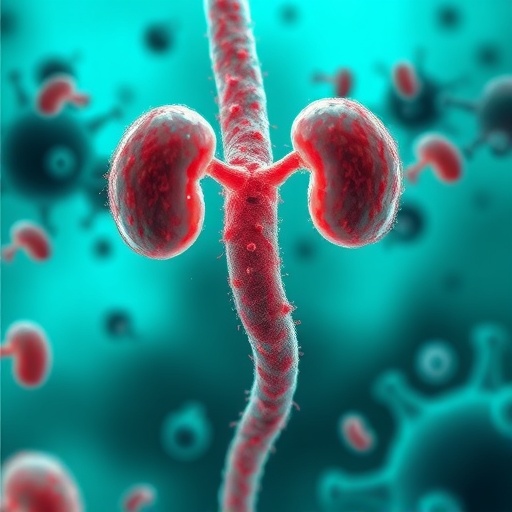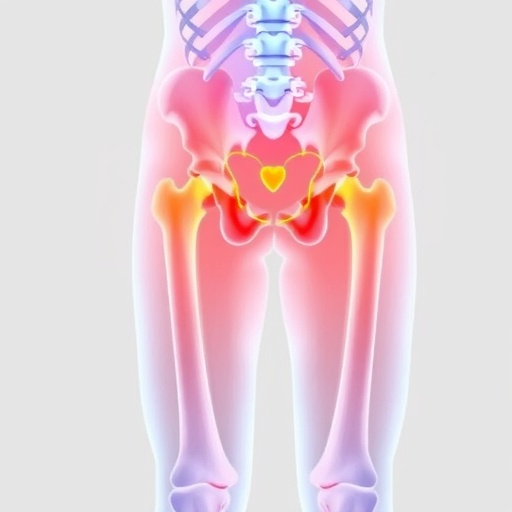The common and highly resistant Pseudomonas aeruginosa bacterium is a fatal threat to weakened and ill patients. A new study from Lund University in Sweden now shows that a combination treatment using two different types of antibiotics can reduce mortality up to five times.
The findings are part of a new doctoral thesis, which also describes some of the bacterium's ingenious survival strategies in the human body.
"The combination treatment against Pseudomonas aeruginosa was effective in all age groups and for various types of infections, including pneumonia and urinary tract infections. The results are ready to be put into practice at Swedish hospitals immediately", says Magnus Paulsson, a doctor of medical science at Lund University and physician at Skåne University Hospital.
Pseudomonas aeruginosa is a very common bacterium, found in most environments. It is practically resistant to our most common antibiotics, and nowadays certain bacterial strains have become completely resistant to all antibiotics.
However, Pseudomonas aeruginosa mainly poses a serious threat to weakened and ill patients, usually already undergoing care. For example, people with cystic fibrosis, COPD (chronic obstructive pulmonary disease) or urinary catheters have a high risk of developing an infection caused by this bacterium. Some of these patients subsequently develop sepsis (blood poisoning) which can be fatal.
"We live longer, which also means that there are more people who live with various diseases. Therefore, infections caused by Pseudomonas aeruginosa and other bacteria that affect people with impaired immune systems have become more common", explains Magnus Paulsson.
In his thesis, he offers new explanations as to why Pseudomonas aeruginosa survives in the human body – despite antibiotic medication. The focus of the research is on the bacterial vesicles – a type of excreted nanoparticles, which are dislodged from the bacterial surface. These carry and spread many of the bacterial properties.
Pseudomonas aeruginosa, like the related Moraxella catarrhalis bacterium, produces beta-lactamase which breaks down antibiotics. The bacteria can then use the vesicles to spread the substance. Paulsson's thesis shows that the vesicles help enable these and other bacteria to effectively colonise the body: when the vesicles spread, the body responds by engaging its immune system. But the vesicles do not let themselves be defeated; instead, protect their interior cargo and inhibit the immune system's ability to neutralise the beta-lactamase, promoting bacterial invasion in the body.
Another trick in which Pseudomonas aeruginosa uses its vesicles was studied with particular focus on infection in the lungs. In this case, the vesicles trigger an increased production of vitronectin – a protective protein that controls the body's immune system. The Pseudomonas bacteria binds vitronectin to its surface and the immune response is subsequently stopped.
"The process was previously known, but our study is the first to show that this can happen in our lungs", says Magnus Paulsson.
The thesis is based on both patient and laboratory studies. Now, the research continues on how to stop the bacterial progression using a vaccine or various bodily defence mechanisms.
###
Magnus Paulsson defended his thesis "Host-pathogen interactions in Pseudomonas aeruginosa invasive and respiratory tract infection" at Lund University on 24 May 2017: http://portal.research.lu.se/portal/en/publications/hostpathogen-interactions-in-pseudomonas-aeruginosa-invasive-and-respiratory-tract-infection(076b2f13-acff-4bc5-9f27-f63e686345b4).html
Media Contact
Magnus Paulsson
[email protected]
46-703-124-424
@lunduniversity
http://www.lu.se
http://portal.research.lu.se/portal/en/publications/hostpathogen-interactions-in-pseudomonas-aeruginosa-invasive-and-respiratory-tract-infection(076b2f13-acff-4bc5-9f27-f63e686345b4).html
############
Story Source: Materials provided by Scienmag




